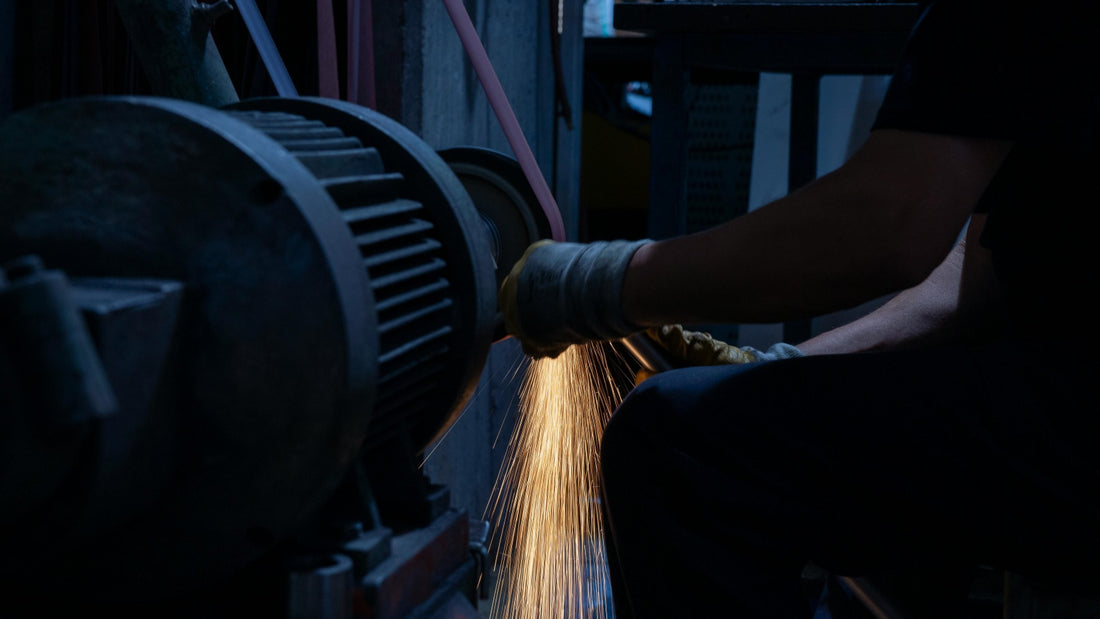Knowing and preventing cutting disc breakage: causes and solutions
Cutting discs are essential tools in various industries that can provide precise and efficient cutting of materials. However, when these discs break, they can cause significant safety risks and operational downtime. This article synthesizes opinions from various sources and provides a comprehensive guide to the causes of cutting disc fracture and practical prevention techniques.

Common causes of cutting disc breakage
1. Overwork and stress

Applying excessive pressure during the cutting operation can cause the blade to be subjected to excessive stress, leading to breakage. This excessive force is usually caused by pushing the knife beyond the recommended limits or by using blades that are not suitable for cutting specific materials.
2. Improper use of equipment
Using cutting discs on poorly maintained equipment or equipment unsuitable for the type of cutting disc can cause damage. Problems such as dislocation or imbalance in the equipment can cause uneven stress distribution and ultimately petal failure.
3. Valve petal defects
Manufacturing defects or damage to the disc prior to use can damage its structural integrity. Discs with cracks, splits or other visible defects break more easily under operational stresses.
4. Improper handling and storage
Improper handling and storage can cause damage to the disc. Dropping or improper handling of the brake disc can cause cracks or weaknesses, while exposure to extreme temperatures or corrosive environments can degrade the brake disc material over time.
5. Incorrect operating conditions
The cutting wheel must be used within the prescribed speed and load parameters. Operating the wheel beyond these conditions, such as using it at excessive speed or for inappropriate cutting tasks, can cause overheating and breakage.
Preventive technology

1. Comply with the manufacturer's specifications
Always follow the manufacturer's guidelines for using the cutting wheel, including recommended pressure, speed, and material compatibility. Make sure the equipment is properly aligned and maintained to avoid uneven tension.
2. Periodic maintenance and inspection
Perform periodic maintenance inspections of the cutting equipment and cutting disc. Before use, check the brake disc for visible signs of damage or defects. Replace any disc with signs of wear or improper treatment.
3. Correct handling and storage
Handle the cutting disc with care to avoid any damage. Store the disc in a dry and cool place and protect it from physical shocks and corrosive substances. Use appropriate storage solutions to prevent the disc from coming into contact with materials that may cause damage.
4. Training and best practices
Ensure that all personnel are trained in the proper use of cutting discs and equipment. Emphasize the importance of following best practices in pressure applications, cutting techniques, and equipment maintenance.
5. Use of high quality compact discs
Invest in high-quality cutting discs produced by reputable manufacturers. High-quality discs are less likely to be defective and are more resistant to operational stress than low-quality alternatives.
Summary of causes and solutions
| Cause | Description | Preventive technology |
| Overwork and stress | Apply excessive pressure on the petal. | Comply with manufacturer's specifications. |
| Improper use of equipment | Use of misaligned or inappropriate equipment. | Regular maintenance and inspection. |
| Disk defects | Manufacturing of pre-existing defects or damage. | Check the brake disc before use and replace the damaged brake disc. |
| Improper handling and storage | Falling, mishandling or improper storage. | Correct handling and storage methods. |
| Incorrect operating conditions | Use discs that exceed the recommended speed and loading parameters. | Follow the operating conditions specified by the manufacturer. |

By knowing these causes and implementing recommended preventative techniques, you can improve the safety and efficiency of cutting operations, ensure long-lasting performance of cutting wheels, and reduce the risk of accidental breakage.

